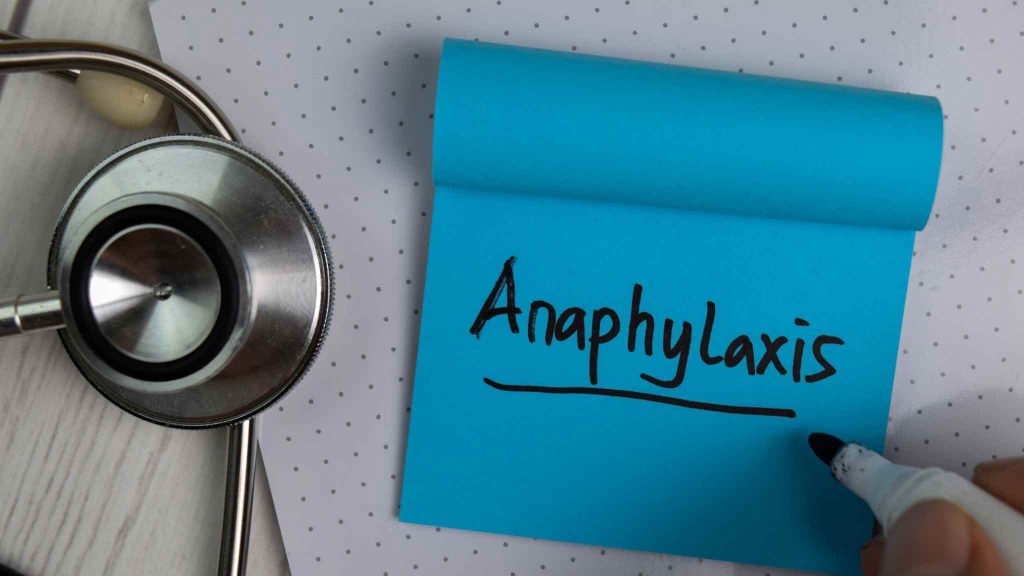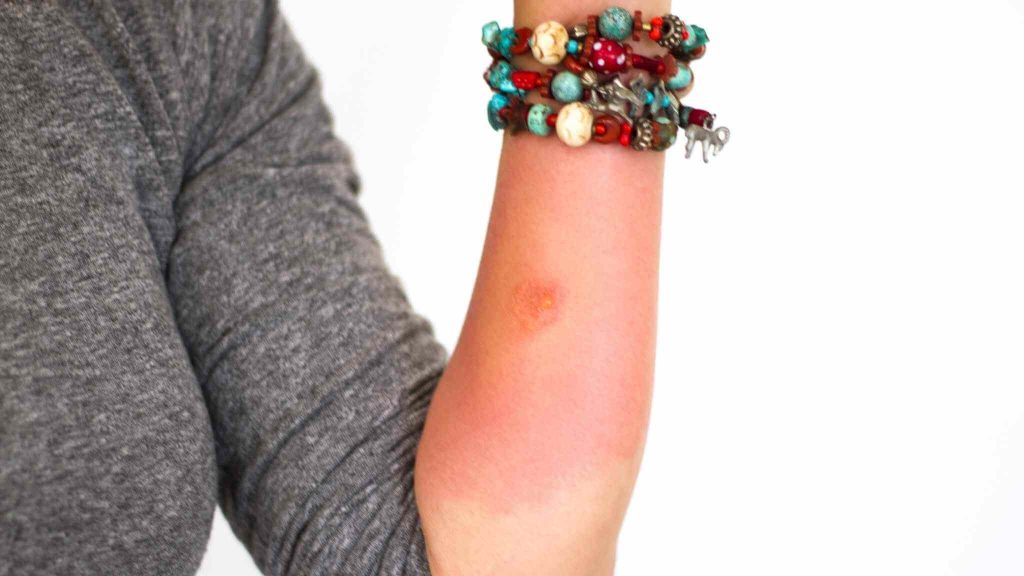Food Allergies And The Anaphylaxis Action Plan

If you have a food allergy, you know that it can be a serious and potentially life-threatening condition. But did you know that every year, more and more people are being diagnosed with food allergies? Food allergies are on the rise in both children and adults.
One of the best ways to deal with a food allergy is to have an anaphylaxis action plan. This plan outlines what to do in the event of a severe allergic reaction, and can be a lifesaver in an emergency situation. In this blog post, we will discuss what an anaphylaxis action plan is and when you are given one.
If you have a food allergy, your body reacts to a particular protein in that food as if it were harmful. This reaction can be severe, and in some cases, life-threatening.
There are three main types of food allergies:
- Immediate hypersensitivity reaction (IgE-mediated): This type of reaction is the most severe, and can occur within minutes to hours after eating the offending food. Symptoms may include hives, swelling, difficulty breathing, and anaphylaxis (a potentially life-threatening condition that causes the throat to swell and blood pressure to drop).
- Delayed hypersensitivity reaction (non-IgE-mediated): This type of reaction is less severe than an IgE-mediated reaction, but can still cause serious symptoms. It typically takes place several hours to days after consuming the problem food. Symptoms may include gastrointestinal distress (e.g., vomiting, diarrhea), skin rash, and headaches.
- Mixed reactions: Some people may experience both IgE-mediated and non-IgE-mediated reactions to certain foods.
If you think you might have a food allergy, see your doctor for testing. They will likely perform a skin prick test or blood test to look for antibodies that indicate an allergy. If you have a positive test result, they will work with you to develop a treatment plan that includes avoiding the problem food and having emergency medication on hand in case of accidental exposure.
What to do if you have a food allergy reaction
If you have a food allergy, it’s important to know what to do in the event of a reaction. The first step is to identify the allergen and avoid future exposure. If you experience a reaction, it’s important to stay calm and call for help.
If you have symptoms of anaphylaxis and have been prescribed an EpiPen, use it as directed and seek medical attention immediately. If you don’t have an EpiPen, and you are having symptoms of anaphylaxis, seek medical attention immediately.
Anaphylaxis Action Plan
If you or your child has a food allergy, it’s important to have a plan in place in case of an allergic reaction. This is called an anaphylaxis action plan.
Your anaphylaxis action plan should be developed with your allergist and should be tailored to your individual needs. However, there are some general guidelines that all plans should include.
First, you should always carry your EpiPen with you. It’s important to have two doses available if possible, just in case one dose isn’t enough to stop the reaction.
Secondly, you should know what to do if you or your child starts having symptoms of an allergic reaction. This may include things like hives, swelling, difficulty breathing, or dizziness. If any of these occur, you should give the person a dose of epinephrine and then call emergency services.

Thirdly, you should have a plan for what to do after the reaction has been treated. This may include going to the hospital for observation or following up with your allergist.
It’s also important to keep your anaphylaxis action plan up-to-date. Be sure to review it yearly with your allergist and make necessary changes.
What is the anaphylaxis action plan?
The Anaphylaxis Action Plan is a plan of action created by the Australasian Society of Clinical Immunology and Allergy (ASCIA) and is to be followed in the event of a severe allergic reaction (anaphylaxis). It should be designed by a healthcare professional in consultation with the person with the allergy and their carers and should be made available to the school or childcare if the patient is a child.
The plan should outline what to do in the event of an anaphylactic reaction, including the use of emergency medication such as adrenaline (epinephrine). Further information can be provided that can include managing allergies on a day-to-day basis, avoiding triggers and carrying emergency medication.
Who needs an anaphylaxis action plan?
There is no definitive answer to this question as it depends on many factors. However, generally speaking, anyone who has been diagnosed with a food allergy or has experienced anaphylactic reactions to food should have an anaphylaxis action plan in place.
This plan should be tailored to the individual and their specific needs including information on what to do in the event of an allergic reaction.

How to get an action plan for anaphylaxis?
If you have a food allergy, it’s important to have an anaphylaxis action plan in place in case of a severe reaction. An anaphylaxis action plan will list the steps to take if you or someone else has a severe allergic reaction and who to contact in case of an emergency.
To get an anaphylaxis action plan, you’ll need to see your doctor or allergist for testing. Once you know what your trigger foods are, you can work with your doctor to create a personalized plan. This may include carrying epinephrine with you at all times and knowing how and when to use it. It’s also important to know what to do if someone around you is having a reaction, even if they don’t have a food allergy themselves.
If you have a food allergy, an anaphylaxis action plan can save your life.
Foods to avoid if you have a food allergy
If you have a food allergy, there are certain foods that you should avoid. These include:
- Foods that contain the allergen: For example, if you are allergic to peanuts, you should avoid foods that contain peanuts, such as peanut butter or peanut oil.
- Cross-contaminated foods: These are foods that have come into contact with the allergen, even if they don’t contain the allergen themselves. For example, if you are allergic to peanuts, you should avoid foods that were processed in a factory that also processes peanuts.
- Hidden sources of the allergen: Some allergens are not always obvious in food. For example, milk proteins can be present in processed foods even if they don’t contain any milk products.

What are food allergies?
There are many different types of food allergies, but they all have one thing in common: the body’s immune system reacts to a particular food as if it were harmful.
The most common symptoms of a food allergy are itching or swelling in the mouth, hives, and difficulty breathing. Some people with food allergies also experience nausea, vomiting, and diarrhea. In severe cases, a food allergy can trigger anaphylaxis, which is a potentially life-threatening condition.
There are several theories about why some people develop food allergies. One theory suggests that it may be due to a combination of genetic and environmental factors.
There is no cure for food allergies, but avoiding triggering foods is the best way to prevent symptoms. For people who have severe reactions, carrying epinephrine (a medication that can reverse the effects of anaphylaxis) is essential.
If a child develops a food allergy as an infant, they may grow out of it by school age or even a bit later.
The different types of food allergies
There are many different types of food allergies. The most common food allergies are:
- peanuts
- sesame
- tree nuts
- fish
- shellfish
- eggs
- cow’s milk
- soy
- wheat.
Other less common food allergies can include other fruits, vegetables, oats and any other edible substance.
Some people have mild reactions to certain foods, while others may have a severe reaction called anaphylaxis. Anaphylaxis is a medical emergency that can be life-threatening. If you think you or someone you know is having an anaphylactic reaction, call emergency services immediately.

Symptoms of a food allergy reaction
The symptoms of a food allergy reaction can vary depending on the person and the severity of their allergy. However, there are some common symptoms that many people with food allergies experience.
The mild to moderate symptoms of an allergic reaction include:
- Swelling of lips, face or eyes
- hives or welts
- tingling in the mouth
- abdominal pain and vomiting (however these are signs of anaphylaxis in insect allergy)
Symptoms of a severe allergic reaction are:
- difficulty or noisy breathing
- swelling of the tongue
- swelling or tightness in the throat
- dizziness or collapse
- wheeze or persistent cough
- difficulty talking or hoarse voice/cry
- pale and floppy (young child)
If you experience any of these symptoms after eating, it is important to seek medical attention immediately as it could be a sign of a serious allergic reaction.
Conclusion
If you have a food allergy, it’s important to know how to protect yourself in case of an emergency. The anaphylaxis action plan is a great tool to have on hand in case you or someone you know experiences a severe allergic reaction. With this plan, you can be prepared for anything and ensure that everyone knows what to do in case of an emergency. Everyone with a food allergy should have an action plan for anaphylaxis.
first aid courses that cover anaphylaxis
The First Aid Nest run first aid courses that cover first aid for anaphylaxis amongst lots of other emergency situations.
Our workplace first aid courses can be run at your site Australia-wide.
Our sophisticated system will take the headache out of renewal for you too, we will send you reminders about when your certificate is about to expire!
Book your spot or workplace with us today, contact us with any questions, or head to our FAQ page.

